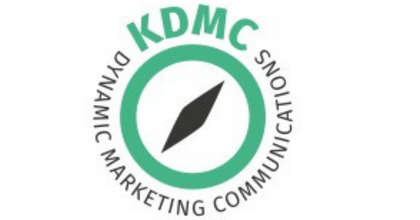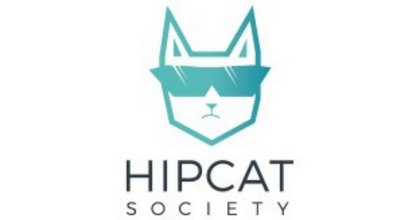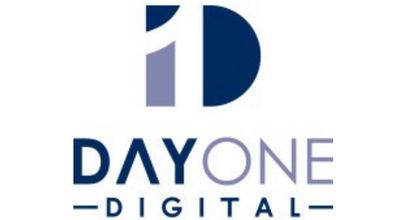
Top Ride Sharing App Development Companies
Welcome to our curated list of the top Ride Sharing App Development Companies! Choosing the right partner to develop your ride-sharing app is crucial for its success, and we’re here to help. Our comprehensive guide showcases the best firms in the industry, ranked by user reviews. Whether you’re looking to build a carpooling service, taxi-hailing app, or ride-sharing platform, our list highlights companies known for their expertise in creating innovative and reliable solutions. With our curated selection, you can make informed decisions and select the perfect partner to bring your ride-sharing app idea to life. Explore our list and embark on your journey today!
List of the Best Ride Sharing App Development Companies

-
Employees: 2 to 10
-
Min. Project amount: $ 25000
-
Country: USA

ioCreative
-
Employees: 2 to 10
-
Min. Project amount: $ 25000
-
Country: USA

In Media Networks
-
Employees: 2 to 10
-
Min. Project amount: $ 25000
-
Country: USA

iePlexus
-
Employees: 11 to 50
-
Min. Project amount: $25000
-
Country: U.S.A

HipCat Society
-
Employees: 11 to 50
-
Min. Project amount: $25000
-
Country: U.S.A

Day One Digital
-
Employees: 11 to 50
-
Min. Project amount: $25000
-
Country: U.S.A

Coffey Communications
-
Employees: 51 to 200
-
Min. Project amount: $25000
-
Country: U.S.A
-
Employees: 2 to 10
-
Min. Project amount: $25000
-
Country: U.S.A
-
Employees: 2 to 10
-
Min. Project amount: $25000
-
Country: U.S.A
-
Employees: 2 to 10
-
Min. Project amount: $25000
-
Country: U.S.A
** Buyer's Guide **
- 1. What key features should I look for in a ride-sharing app developed by a company?
- 2. How can a ride-sharing app ensure safety for both drivers and passengers?
- 3. Can the app support different types of ride-sharing services, such as carpooling, taxi-hailing, and peer-to-peer rides?
- 4. How do ride-sharing app development companies handle scalability and reliability, especially during peak demand periods?
1.What key features should I look for in a ride-sharing app developed by a company?
When evaluating ride-sharing app development companies, consider features such as real-time tracking, secure payment integration, driver and passenger profiles, rating and review system, route optimization, in-app messaging, emergency assistance, and seamless user experience across platforms.
When choosing a ride-sharing app development company, prioritizing features that ensure user safety, convenience, and a smooth overall experience is crucial. Here’s a breakdown of key features to look for:
Real-Time Tracking:
GPS Integration: Real-time GPS tracking allows passengers to see their driver’s location and estimated arrival time, enhancing transparency and peace of mind.
Route Visibility: The app should display the planned route for the trip, allowing passengers to follow their journey and anticipate arrival.
Secure Payment Integration:
Multiple Payment Options: Offer riders various secure payment options like credit cards, debit cards, or mobile wallets for convenient in-app fare payments.
Transparent Fare Estimates: The app should provide upfront fare estimates based on distance, traffic conditions, and any applicable surge pricing.
Passenger and Driver Profiles:
Verification System: A verification system for both passengers and drivers helps build trust within the platform. This may involve ID verification, phone number confirmation, or social media integration.
Profile Information: Allow passengers to view basic driver information (e.g., name, photo, car model, license plate number) and ratings from previous passengers. Drivers can also have profiles with information relevant to passengers (e.g., years of experience, positive comments).
Rating and Review System:
Two-Way Feedback: A two-way rating and review system allows both passengers and drivers to rate each other after each ride. This helps maintain accountability and encourages positive user behavior.
Review Visibility: Displaying reviews publicly can help passengers make informed choices about drivers and vice versa.
Route Optimization:
Mapping and Navigation: Integrate powerful mapping and navigation tools to suggest optimal routes considering factors like traffic conditions, road closures, or estimated travel time.
Multi-Stop Functionality: Consider features that allow passengers to plan trips with multiple stops, which can be helpful for errands or ride-sharing with companions.
In-App Messaging:
Real-Time Communication: Allow passengers and drivers to communicate directly through the app using text messaging or voice calls for quick questions or clarifications during the ride.
Anonymity Option: Maintain passenger and driver anonymity by masking phone numbers or offering text-based communication to ensure privacy.
Emergency Assistance:
Built-in Safety Features: Integrate features like an emergency button that connects passengers to emergency services or allows them to share their trip details with a trusted contact.
Ride-Sharing Safety Tips: Provide in-app resources or educational content with ride-sharing safety tips for both passengers and drivers.
Seamless User Experience:
Intuitive Interface: A user-friendly and intuitive interface on both passenger and driver apps is essential for a smooth user experience. The design should be clear, easy to navigate, and accessible for users with varying technical skills.
Multi-Platform Compatibility: Ensure the app functions seamlessly across different operating systems (e.g., iOS, Android) to cater to a wider user base.
By prioritizing these features, you can select a ride-sharing app development company that creates a platform focused on user safety, convenience, and a positive experience for both passengers and drivers. This can lead to a successful ride-sharing app that thrives in the competitive transportation industry.
2.How can a ride-sharing app ensure safety for both drivers and passengers?
Reputable ride-sharing app development companies prioritize safety features such as driver background checks, real-time tracking, SOS buttons for emergencies, two-way rating systems, trip verification, and encrypted communication channels to ensure a secure and reliable experience for both drivers and passengers.
Safety should be paramount for any ride-sharing app. Here are some key features that reputable development companies integrate to ensure a safe environment for drivers and passengers:
Driver Screening and Verification:
Background Checks: Thorough background checks on drivers help reduce risks. This may involve criminal history checks, driving record verification, and reference checks.
License Verification: Ensure all drivers have valid driver’s licenses and necessary permits for operating a ride-sharing vehicle.
Real-Time Tracking and Monitoring:
GPS Tracking: Real-time GPS tracking allows passengers to see their driver’s location and vice versa. This transparency provides peace of mind and allows for monitoring potential safety issues.
Trip Verification: Implement a system where drivers confirm pickup details (passenger name, destination) before the ride begins. This helps prevent misunderstandings and ensures passengers are entering the correct vehicle.
Emergency Features and Communication:
SOS Button: A readily accessible SOS button within the app allows passengers or drivers to connect directly to emergency services in case of an urgent situation.
Emergency Contact Sharing: Allow passengers to share trip details (driver information, location, estimated arrival time) with a trusted contact for added safety.
Two-Way Rating and Feedback System:
Accountability and Transparency: A two-way rating and review system incentivizes positive behavior. Passengers can rate drivers based on factors like safety, courtesy, and driving skills. Drivers can also rate passengers for respectful behavior and clear communication.
Review Visibility: Public visibility of ratings and reviews helps both parties make informed decisions. Passengers can choose drivers with good ratings, and drivers with positive feedback are more likely to receive ride requests.
Secure Communication Channels:
Data Encryption: Encrypt communication channels between passengers and drivers to protect sensitive information like phone numbers or pickup locations.
Anonymity Options: Consider offering options for anonymized communication within the app, such as text-based messaging with masked phone numbers, to maintain privacy while enabling necessary communication during rides.
Additional Safety Measures:
Ride-Sharing Safety Tips: Provide educational resources within the app with safety tips for both drivers and passengers. This can cover topics like rider etiquette, safe pick-up and drop-off procedures, or how to report suspicious activity.
Driver Training: Incorporate mandatory safety training programs for drivers on defensive driving techniques, passenger interaction, and emergency response protocols.
By implementing these safety features and fostering a culture of accountability through verification systems and feedback mechanisms, ride-sharing app development companies can create a platform that prioritizes the well-being of both drivers and passengers. This can lead to a more trustworthy and reliable ride-sharing experience for everyone involved.
3.Can the app support different types of ride-sharing services, such as carpooling, taxi-hailing, and peer-to-peer rides?
Yes, top ride-sharing app development companies design their platforms to support various ride-sharing models, including carpooling, taxi-hailing, peer-to-peer rides, shuttle services, and more. They offer customizable solutions tailored to the specific needs and requirements of their clients.
To cater to a wider user base and offer diverse transportation options, a well-designed ride-sharing app should support various service types. Here’s how development companies can create a flexible platform:
Supporting Different Ride-Sharing Models:
Carpooling: The app can facilitate carpooling by connecting passengers with similar routes to share rides and split costs. Matching algorithms might consider factors like location, destination, preferred travel time, and passenger compatibility.
Taxi-Hailing: Integrate functionalities to hail taxis directly through the app. This can involve features like displaying taxi availability, estimated fare quotes, and real-time tracking of the dispatched taxi.
Peer-to-Peer Rides: The core functionality of connecting passengers with private drivers for on-demand rides. The app should ensure clear differentiation between peer-to-peer rides and taxi services (e.g., fare structure, driver verification).
Shuttle Services: The app can offer scheduled shuttle services for specific routes or locations, beneficial for commuters or travelers needing reliable transportation options.
Customizable Solutions:
Modular Design: A well-designed app architecture allows for modularity. This means different service types can be integrated or disabled based on the specific needs of the client and the target market.
Flexible Feature Sets: The development company should offer options to customize features for each service type. For example, carpooling might require features like cost-splitting tools, while taxi-hailing might benefit from integration with local taxi dispatch systems.
Additional Considerations:
User Interface and User Experience (UI/UX): The app’s interface should be clear and easy to navigate, allowing users to easily switch between different service types and understand the specific features associated with each option.
Clear Pricing and Fare Structures: Transparent pricing structures are crucial. The app should display upfront fare estimates based on factors like distance, travel time, service type (e.g., carpooling vs. taxi), and any applicable surge pricing.
User Verification and Safety: Safety measures like driver verification, background checks, and two-way feedback systems should apply to all ride-sharing service types offered within the app.
By incorporating these elements, ride-sharing app development companies can create a versatile platform that caters to diverse user needs and preferences. This flexibility can lead to increased user adoption, a wider market reach, and a competitive advantage within the transportation industry.
4.How do ride-sharing app development companies handle scalability and reliability, especially during peak demand periods?
Ride-sharing app development companies employ scalable architecture, cloud infrastructure, and load balancing techniques to ensure optimal performance and reliability, even during peak demand periods. They conduct thorough stress testing and performance optimization to maintain seamless operations at all times.
Scalability and reliability are paramount for ride-sharing apps, especially during peak hours when user demand surges. Here’s how top development companies handle these challenges:
Scalable Architecture:
Microservices Architecture: Breaking down the app’s functionality into smaller, independent services (microservices) allows for horizontal scaling. This means adding more servers to specific services experiencing high demand, ensuring smooth operation without compromising performance.
Database Optimization: Utilizing scalable database solutions like NoSQL databases can handle massive amounts of data efficiently. This is crucial for managing large numbers of user requests and real-time location tracking during peak periods.
Cloud Infrastructure:
Cloud-Based Deployment: Leveraging cloud platforms like AWS, Google Cloud Platform, or Microsoft Azure provides inherent scalability and elasticity. Cloud resources can be easily provisioned and scaled up or down based on real-time demand, ensuring optimal resource allocation and cost efficiency.
Load Balancing: Distributing incoming user requests across multiple servers prevents overloading any single server during peak usage. This ensures the app remains responsive and avoids downtime even under heavy traffic.
Performance Optimization:
Stress Testing and Performance Monitoring: Development companies conduct rigorous stress testing to simulate peak demand scenarios and identify potential bottlenecks within the app’s infrastructure. Performance monitoring tools continuously track key metrics and allow for proactive optimization of the app to handle high user volumes effectively.
Caching Mechanisms: Implementing caching mechanisms can significantly improve app performance. By storing frequently accessed data or API responses, the app can retrieve information faster during peak periods, reducing response times and enhancing user experience.
Additional Considerations:
Geographical Distribution: For global ride-sharing apps, deploying servers in geographically distributed locations can minimize latency and ensure a smooth user experience for riders and drivers worldwide.
Real-Time Communication Protocols: Utilizing efficient real-time communication protocols like websockets allows for efficient data exchange between the app and servers, particularly for functionalities like real-time tracking and driver-passenger communication during rides.
By implementing these strategies, ride-sharing app development companies can create robust and scalable platforms that can handle ever-increasing user demand and maintain exceptional performance even during peak usage times. This translates to a reliable and trustworthy ride-sharing experience for users, which is crucial for the success of any ride-sharing app in the long run.






